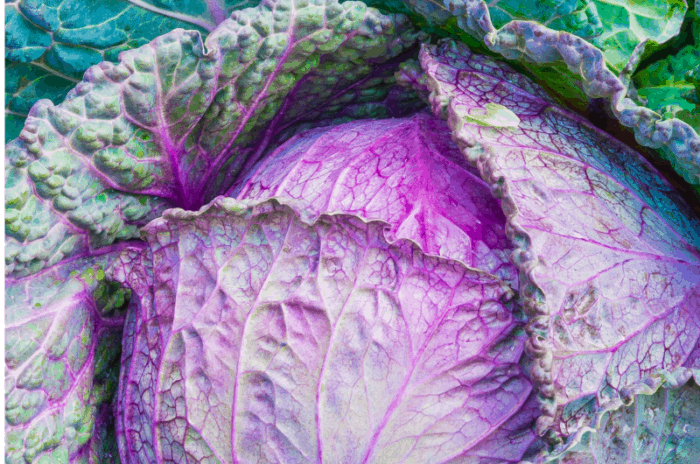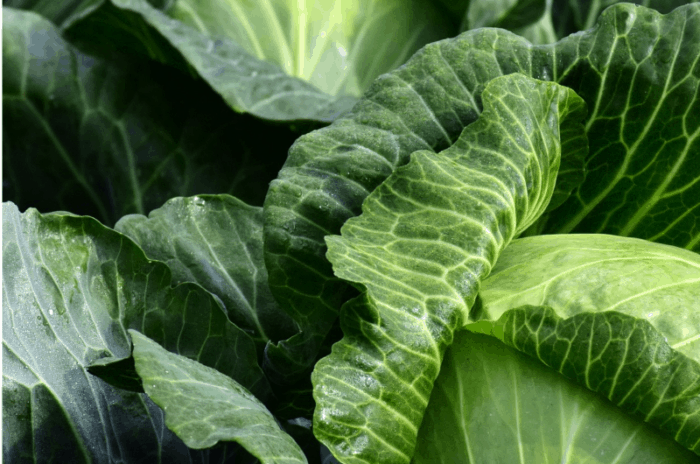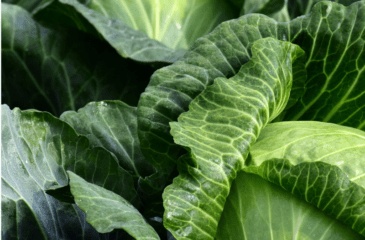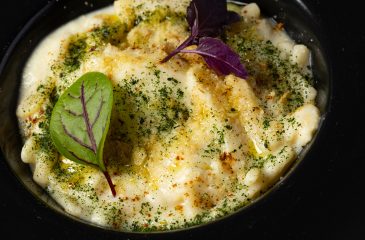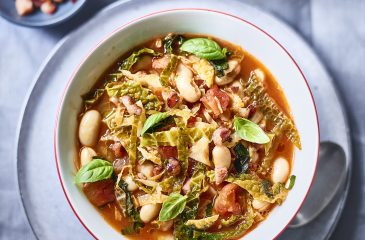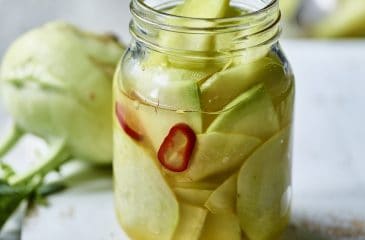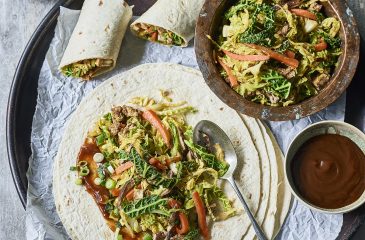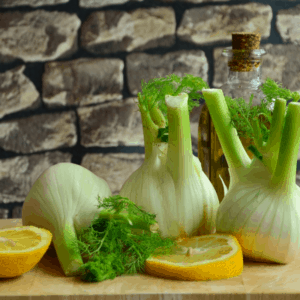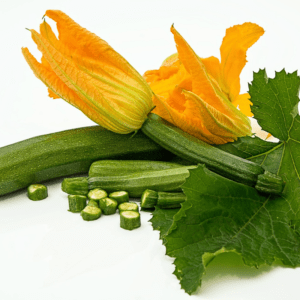Many different varieties of cabbage are grown in Italy and winter is the best time to taste them all.
Some of the most common are illustrated below.
Kohlrabi, a member of the cabbage family, has an oval shape and is the size of a large apple.
Like other cabbage family members, it prefers a deep and fertile soil and a mild, climate.
It is grown in autumn or spring, since it does not like excessive heat. It does resist the cold well and can stay in the open even in early winter.
The firm, juicy and sometimes a little woody flesh has an intense, sweet and aromatic flavour.
It can be eaten raw or cooked. Edible preparations are made with both the stem and the leaves.
Kohlrabi also lends itself perfectly to more creative preparations: a delicious lasagna can be prepared, replacing the pasta with thin slices of kohlrabi.
There are several types of kohlrabi that differ mainly in colour: the most common is a pale light green, but there is also a purple /blue variety.
Kohlrabi is rich in antioxidants, mineral salts, vitamin C and beta-carotene, as well as high in fibre, which is a valuable aid for intestinal health.
Savoy cabbage is in general considered a winter vegetable and one of several cabbage varieties.
It has crinkled, emerald green leaves, which are crunchy and tender.
Of very ancient origin, savoy cabbage is grown mainly in the central-northern regions of Italy.
Production in the Canavese area is particularly widespread: a traditional festival of savoy cabbage takes place in Montalto Dora in November each year.
It is an elegant cabbage, delicate rather than heavy, and perfect for stuffing, braising with tomatoes and Spanish chorizo, or simmering in soups such as minestrone, or the hearty Potee Champenoise, a favourite harvest dish of France’s Champagne region.
Savoy cabbage is very high in vitamin A, vitamin C, vitamin K (important for blood coagulation) and mineral elements such as potassium, phosphorus, iron, calcium, sulphur (which explains the characteristic smell of cabbage when cooking) with a calorie count of 30 Kcal per 100 g.
Its healing properties have been known since ancient times.

